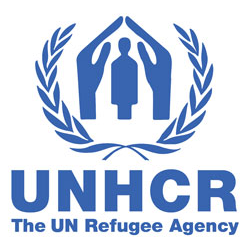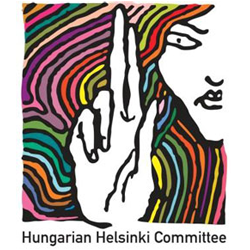Main Debates
- Must the group be defined by its protected characteristics and/or by society’s perception of it? Are these two approaches cumulative, or alternative?
- Must there be a linkage between protected characteristics and core human rights?
Main Points
Gender-related issues
- Domestic violence
- Female genital mutilation
- Social mores
- Sexual orientation
- Transsexuality
- Family members
- Caste or clan
Treaties
- OHCHR, Convention on the Elimination of All Forms of Discrimination against Women (CEDAW), 18 December 1979, 1249 U.N.T.S. 513.
Soft Law
- UNHCR, ‘Handbook on Procedures and Criteria for Determining Refugee Status under the 1951 Convention and the 1967 Protocol Relating to the Status of Refugees’, HCR/IP/4/Rev.1, 1979, paras. 77–79.
- United Nations, Declaration on the Elimination of Violence Against Women, UN General Assembly Resolution, A/RES/48/104, 20 December 1993.
UNHCR Documents
- UNHCR, ‘Guidelines on International Protection: Gender-related Persecution within the Context of Art. 1A(2) of the 1951 Convention and/or Its 1967 Protocol Relating to the Status of Refugees’, May 2002.
- UNHCR, ‘Guidance Note on Refugee Claims Relating to Victims of Organized Gangs’, March 2010.
- UNHCR, ‘Handbook for the Protection of Women and Girls’, January 2008, pp. 137–144.
- UNHCR, ’Working with Lesbian, Gay, Bisexual, Transgender and Intersex Persons in Forced Displacement’, Need to Know Guidance 2, 2011.
- UNHCR ‘Guidelines on International Protection No. 9: Claims to Refugee Status based on Sexual Orientation and/or Gender Identity’, 23 October 2012.
- UNHCR, ’Guidelines on International Protection No. 7: The Application of Article 1A(2) of the 1951 Convention and/or 1967 Protocol Relating to the Status of Refugees to Victims of Trafficking and Persons At Risk of Being Trafficked’, 7 April 2006, HCR/GIP/06/07.
Cases
Core
- X, Y, Z v. Minister of Immigration and Asylum, CJEU Judgment of 8 November 2013 (criminal laws that target homosexuals, who share an innate and fundamental characteristic, support the conclusion that homosexuals constitute a particular social group).
- Ramos v. Holder, 589 F. 3d 426 (7th Cir. 2009). (US judicial decision ruling that former gang members can constitute a particular social group that is socially visible).
- Al-Ghorbani v. Holder, 585 F. 3d. 980, 6th Circuit 2009. (US judicial decision ruling that recognized young westernized Yemenites who married in defiance of family and clan as particular social group).
- Attorney General v. Ward, [1993] 2 SCR 689 (Supreme Court). (Canadian judicial decision on the notion of social group).
- Bah v. Mukasey, Attorney General, 529 F. 3d 99, 2nd Circuit 2008). (US judicial decision recognizing that women who experienced female genital mutilation as children may still fear future persecution).
- Moldova v. Secretary of State for the Home Department, (2008) UK AIT 00002, 26 November 2007, (UK Asylum and Immigration Tribunal). (UK administrative decision that ‘former victims of trafficking’ can constitute a social group).
- Gao v. Gonzales, 440 F. 3d 62 (2nd Cir. 2006). (US judicial decisions holding that forced marriages can constitute persecution based on social group).
- Secretary of State for the Home Department v. K; Fornah v. Secretary of State for the Home Department, (2006) UKHL 46 (House of Lords). (UK judicial decision holding that women in Sierra Leone facing female genital mutilation experienced persecution based on their social group).
- Islam A.P.) v. Secretary of State for the Home Department Regina v. Immigration Appeal Tribunal and Another Ex Parte Shah (A.P.) (Conjoined Appeals), (25 March 1999) 2 AC 629. (UK judicial decision holding Pakistani women accused of adultery feared persecution based on their social group).
- A and Another v Minister for Immigration and Ethnic Affairs and Another, [1997], Australia: High Court, 24 February 1997 (Australian High Court decision on forced sterilization under China’s one child policy constitutes persecution on account of social group. Establishes the ‘social perception’ approach).
- Matter of Kasinga, 21 Immigration & Nationality Decisions 357 (BIA 1996). (US administrative decision recognizing women who fear female genital mutilation as a social group ).
- Matter of Acosta, 20 Immigration & Nationality Decisions 211 (BIA 1985). (US administrative decision concerning group sharing common immutable characteristic).
Readings
Core
- J. Hathaway and M. Foster, The Law of Refugee Status, 2nd edition, (Cambridge: Cambridge University Press, 2014), pp. 423-436.
- M. Foster, The 'Ground with the Least Clarity': A Comparative Study of Jurisprudential Developments relating to 'Membership of a Particular Social Group', UNHCR Legal and Protection Policy Research Series, PPLA/2012/02, April 2012.
- T. Aleinikof, ‘Protected Characteristics and Social Perceptions: An Analysis of the Meaning of “Membership of a Particular Social Group” Determination’, in E. Feller, V. Türk, and F. Nicholson (eds), Refugee Protection in International Law: UNHCR’s Global Consultations on International Protection (Cambridge: Cambridge University Press, 2003), pp. 263–311.
Extended
- J. Hathaway and M. Foster, The Law of Refugee Status, 2nd edition, (Cambridge: Cambridge University Press, 2014), pp. 436-461.
- B. Lobo, Women as a Particular Social Group: A Comparative Assessment of Gender Asylum Claims in the United States and United Kingdom, Georgetown Immigration Law Journal, vol. 26, no. 2 (2012), pp. 361-404.
- J. Wessels, HJ (Iran) and HT (Cameroon)—Reflections on a New Test for Sexuality-based Asylum Claims in Britain, International Journal of Refugee Law, vol. 24, no. 4 (2012), pp. 815-839.
- M. McPherson, L. Horowitz, D. Lusher, S di Giglio, L. Greenacre, & Y. Saalmann, ’Marginal Women, Marginal Rights: Impediments to Gender-Based Persecution Claims by Asylum-seeking Women in Australia’, Journal of Refugee Studies (2011),vol. 24, no. 2, pp. 323-347.
- N. LaViolette, ‘UNHCR Guidance Note on Refugee Claims Relating to Sexual Orientation and Gender Identity: a Critical Commentary’, International Journal of Refugee Law, vol. 22, no. 2 (July 2010), pp. 173–208.
- N. LaViolette, ‘Gender-Related Refugee Claims: Expanding the Scope of the Canadian Guidelines’, International Journal of Refugee Law, vol. 19, no. 2 (July 2007), pp. 169–214.
- US DHS, ‘Written Clarification Regarding the Definition of “Particular Social Group”’, 13 July 2010.
- A. Zimmerman, C. Mahler, ‘Article 1A, Paragraph 2’, in A. Zimmerman (ed.), The 1951 Convention Relating to the Status of Refugees and Its 1967 Protocol: A Commentary (Oxford: Oxford University Press 2011), pp. 390–398.
 II.2.1.4.5 Particular Social Group
II.2.1.4.5 Particular Social Group
 Treaties
Treaties# Name Size 1  Convention on the Elimination of All Forms of Discrimination against Women (CEDAW), 18 December 1979, 1249 U.N.T.S. 513.
Convention on the Elimination of All Forms of Discrimination against Women (CEDAW), 18 December 1979, 1249 U.N.T.S. 513.Empty 
 UNHCR Documents
UNHCR Documents
 Core Cases
Core Cases



